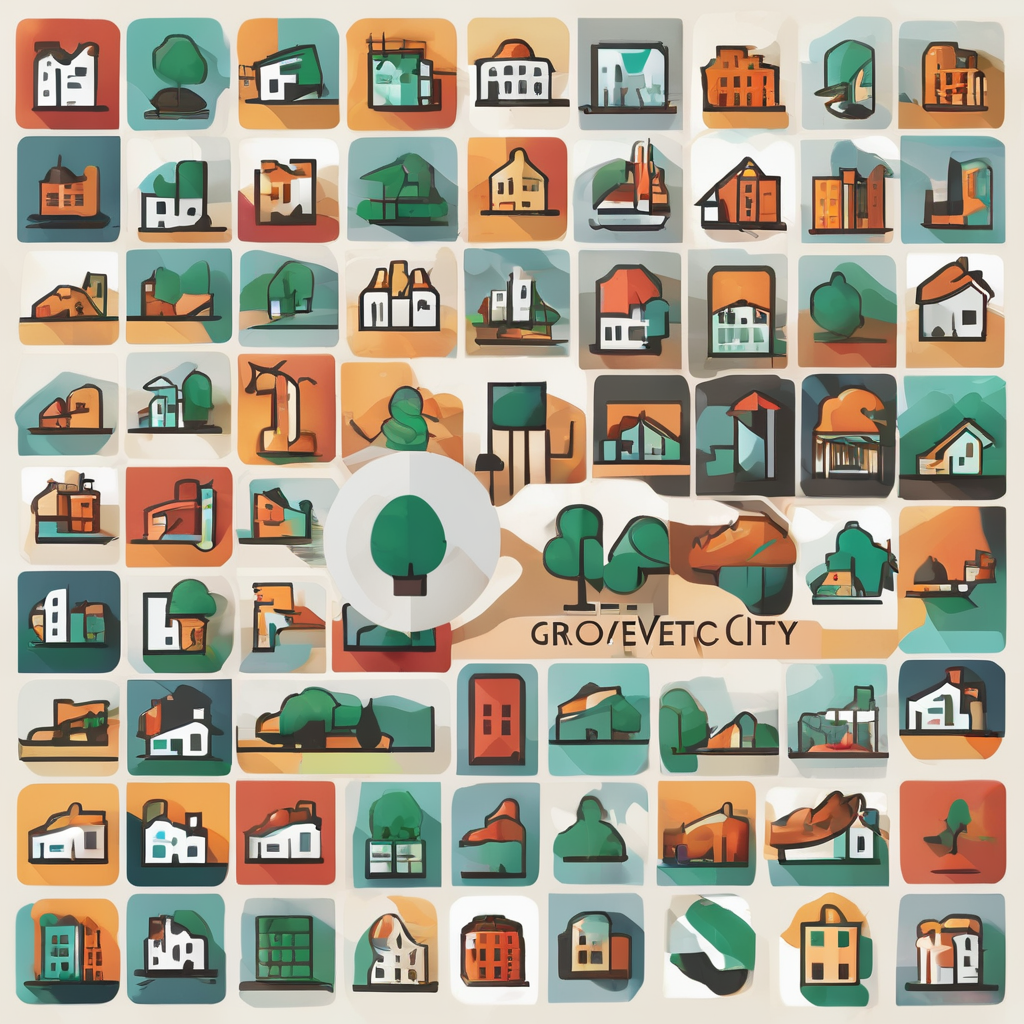Transforming City Development: How Real-Time Pedestrian Traffic Data Shapes Urban Planning
In the era of smart cities and sustainable development, the use of real-time pedestrian traffic data has become a cornerstone in urban planning. This data, driven by advanced technologies such as artificial intelligence (AI), geospatial analysis, and Internet of Things (IoT) devices, is revolutionizing the way cities are designed, managed, and lived in.
The Power of Real-Time Data in Urban Planning
Real-time pedestrian traffic data is more than just numbers; it is a dynamic tool that helps urban planners make informed decisions. Here’s how it works:
Sources of Real-Time Data
Real-time pedestrian traffic data can be gathered from various sources, including:
- Location data via mobile apps: With user permission, mobile apps can provide valuable insights into pedestrian movement patterns[1].
- Smart cameras with image recognition technology: These cameras can count people, track movement, and even identify behavioral patterns[1].
- Beacons installed in commercial and public places: Beacons can track foot traffic and provide detailed analytics on consumer behavior[1].
- IoT devices in urban areas: These devices can monitor and analyze various aspects of urban infrastructure, including traffic flow and pedestrian movement[1].
Real-Time Data Calculation and Processing
AI plays a crucial role in processing and analyzing this data. Here are some key ways AI transforms the process:
Also read : Revolutionizing transport: cutting-edge uses of magnetic levitation technology in future transit solutions
- Dynamic Calculations: AI replaces manual methods with automated, real-time calculations, enabling cities to respond quickly to changing conditions[1].
- Heatmaps and Foot Traffic Analysis: AI creates heatmaps that show the busiest and least busy areas, helping urban planners to optimize shop layouts, advertising placements, and public space utilization[1].
Enhancing Transportation Networks
One of the most significant impacts of real-time pedestrian traffic data is on transportation networks.
Optimizing Traffic Flow
AI-based traffic management systems use real-time data to optimize traffic signal timings, reducing congestion and improving traffic flow. Here are some benefits:
- Reduced Congestion: AI adjusts signal timings dynamically based on live traffic conditions, preventing bottlenecks and reducing delays[3].
- Smart Traffic Routing: AI analyzes GPS and road sensor data to reroute vehicles in real time, suggesting alternate routes to avoid congested areas[3].
- Incident Detection and Management: AI detects accidents or breakdowns faster than traditional systems, ensuring quicker response times and improved safety[3].
Public Transportation Improvements
Real-time data also enhances public transportation by optimizing bus and train schedules. For example:
- Optimized Bus and Metro Routes: Geospatial data helps cities design transportation systems that keep people moving efficiently, reducing congestion and improving travel times[2].
- Public Transit Hubs: Data identifies high-demand areas for public transit hubs, ensuring that public transportation remains a viable alternative to private vehicles[2].
Addressing Environmental and Sustainability Concerns
Sustainable development is a key aspect of modern urban planning, and real-time pedestrian traffic data plays a crucial role in this area.
Environmental Impact Analysis
Geospatial data helps cities forecast environmental impacts and protect vulnerable zones. Here are some examples:
- Flood Zone Mapping: Planners identify high-risk flood areas and build drainage systems accordingly, reducing the risk of flooding[2].
- Air Quality Analysis: Real-time sensors pinpoint pollution hotspots, enabling cities to implement measures to improve air quality[2].
- Green Space Planning: Cities allocate land for parks to improve air quality and the overall quality of life for residents[2].
Sustainable Urban Development
Real-time data helps in creating sustainable cities by optimizing land use and energy consumption. For instance:
- Energy Grid Management: Cities use geospatial data to monitor energy grids, manage waste collection, and optimize transportation, reducing operational costs and improving urban living[2].
- Smart Infrastructure: AI-powered systems adjust traffic lights, waste collection routes, and other urban systems based on real-time data, making cities more efficient and sustainable[2].
Improving Public Safety and Accessibility
Public safety and accessibility are critical components of urban planning, and real-time pedestrian traffic data significantly enhances these areas.
Pedestrian Safety
AI-based systems use computer vision to identify pedestrian crossings and adjust signal timings to ensure safety. Here are some examples:
- Pedestrian Detection: Computer vision-enabled cameras detect pedestrians and adjust signal timings to prevent accidents[3].
- Emergency Vehicle Priority: AI systems ensure that emergency vehicles get green signals to minimize response time, improving public safety[3].
Accessibility and Inclusive Planning
Real-time data helps in creating more accessible and inclusive urban environments. For example:
- Transportation for All: AI optimizes public transportation schedules and routes to ensure that all residents have access to efficient and reliable transportation[3].
- Urban Design: Geospatial data helps in designing cities with accessibility in mind, including the placement of amenities and the design of public spaces[2].
Future of Urban Planning with Real-Time Data
The future of urban planning is heavily dependent on the integration of real-time pedestrian traffic data and advanced technologies.
Advanced Data Collection and Analysis
Future systems will rely on advanced sensors and AI-enabled computer vision to collect and analyze more detailed data. Here are some trends:
- Advanced Sensors: AI-based advanced sensors will capture detailed data on customer movement, behavior, and more[1].
- Predictive Analytics: AI will help businesses and urban planners make accurate predictions about future trends, enabling proactive decision-making[1].
Smart Sustainable Cities
The goal is to create smart, sustainable cities that integrate technology seamlessly into urban development. Here’s how:
- Location-Based Business Intelligence: Businesses can adjust product prices in real time based on foot traffic levels, optimizing their operations and improving customer experience[1].
- City Planning and Infrastructure Development: Analysis of pedestrian movement will help developers design cities with efficiency, creating zones, traffic routes, and placing amenities optimally[1].
Practical Insights and Actionable Advice
For urban planners and city managers, here are some practical insights and actionable advice:
Leveraging Geospatial Data
- Use geospatial data to analyze spatial relationships and make informed decisions about city development. For example, Singapore’s urban planners use advanced technology to design smart transportation routes and green spaces[2].
Implementing AI-Based Traffic Management
- Adopt AI-based traffic management systems to optimize traffic flow, reduce congestion, and improve public safety. Cities like Dubai have seen significant improvements in travel efficiency by redesigning bus routes using geospatial analysis[2][3].
Focusing on Sustainability
- Prioritize sustainability by using real-time data to optimize energy consumption, manage waste collection, and improve air quality. Barcelona is a prime example of a city that uses geospatial data to monitor energy grids and optimize urban systems[2].
Real-time pedestrian traffic data is transforming the landscape of urban planning, enabling cities to become smarter, more sustainable, and more responsive to the needs of their residents. As cities continue to grow and evolve, the integration of AI, geospatial data, and IoT technologies will be crucial in creating urban environments that are efficient, safe, and accessible for all.
Table: Benefits of Real-Time Pedestrian Traffic Data in Urban Planning
| Benefit | Description | Examples |
|---|---|---|
| Reduced Congestion | AI adjusts signal timings dynamically to prevent bottlenecks. | Cities like Dubai have improved travel efficiency by redesigning bus routes[2][3]. |
| Improved Public Safety | AI detects accidents or breakdowns faster and ensures pedestrian safety. | Computer vision-enabled cameras adjust signal timings to prevent accidents[3]. |
| Enhanced Sustainability | Real-time data optimizes energy consumption and improves air quality. | Barcelona uses geospatial data to monitor energy grids and optimize urban systems[2]. |
| Optimized Public Transportation | AI optimizes bus and train schedules to ensure efficient travel. | Geospatial data helps cities design transportation systems that keep people moving efficiently[2]. |
| Better Land Use | Data helps in designing cities with accessibility and efficiency in mind. | Cities allocate land for parks to improve air quality and quality of life[2]. |
| Increased Accessibility | Real-time data helps in creating more accessible urban environments. | AI optimizes public transportation schedules to ensure access for all residents[3]. |
Detailed Bullet Point List: How Real-Time Pedestrian Traffic Data Enhances Urban Planning
- Real-Time Traffic Flow Optimization: AI adjusts signal timings dynamically based on live traffic conditions, preventing congestion at intersections[3].
- Smart Traffic Routing: AI analyzes GPS and road sensor data to reroute vehicles in real time, suggesting alternate routes to avoid congested areas[3].
- Incident Detection and Management: AI detects accidents or breakdowns faster than traditional systems by analyzing camera feeds and sensor data[3].
- Priority for Emergency Vehicles: AI systems ensure that emergency vehicles get green signals to minimize response time[3].
- Pedestrian Safety: Computer vision-enabled cameras identify pedestrian crossings and adjust signal timings to ensure safety[3].
- Environmental Impact Analysis: Geospatial data helps cities forecast environmental impacts and protect vulnerable zones[2].
- Sustainable Urban Development: Real-time data helps in creating sustainable cities by optimizing land use and energy consumption[2].
- Public Safety and Accessibility: Real-time data enhances public safety and accessibility by optimizing urban design and transportation systems[2][3].
Quotes from Experts
- “Geospatial data in urban planning has become the backbone of building smarter, sustainable cities. It offers real-time insights into how cities are shaped, how people move, and where resources need to flow.”[2]
- “AI-based traffic management systems offer dynamic, efficient, and scalable solutions by leveraging real-time data and advanced algorithms to optimize traffic flow and reduce delays.”[3]
- “With Placer, we market events more efficiently than ever before, see clear ways to better serve our residents, and have helped our partners land multiple grants to help put on the Christmas City event.”[5]
By leveraging real-time pedestrian traffic data, cities can move towards a future that is not only smart and sustainable but also safe, accessible, and responsive to the needs of all its residents.








